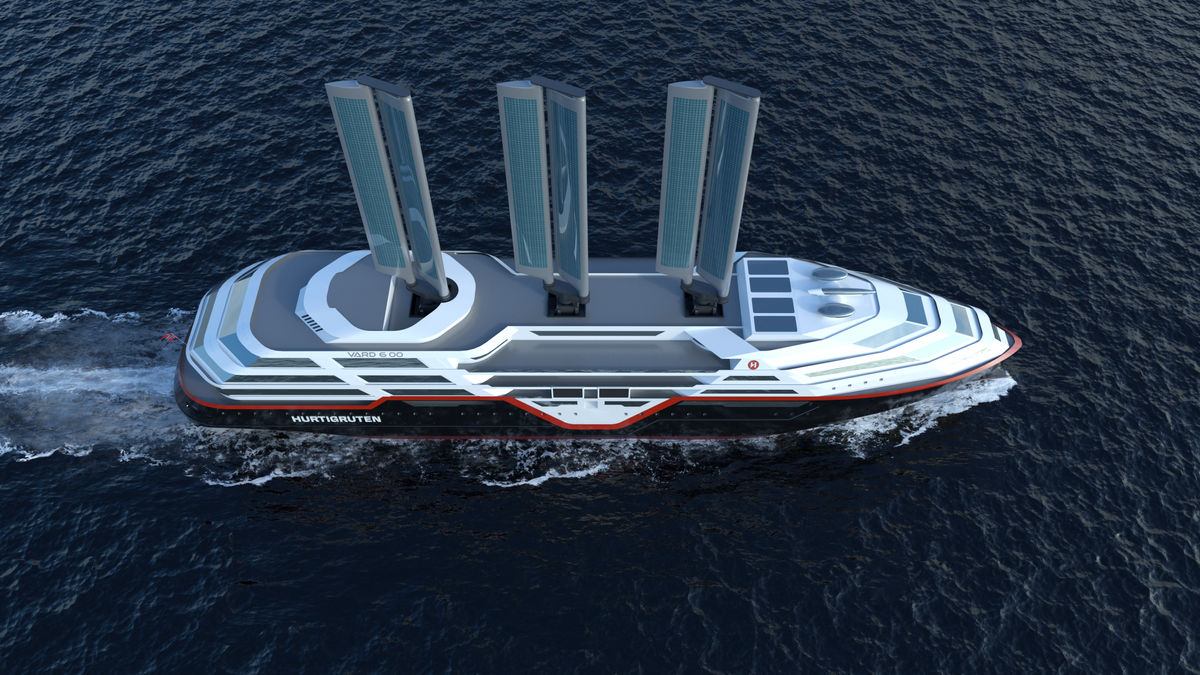Hurtigruten has released plans for its zero-emission ship scheduled to debut in 2030 and it’s impressive. Using large batteries, sails and other innovative solutions, the ship will be entirely emission-free with energy consumption reduced by 40-50%.
The project was initially announced in October 2022 and new renderings show the ship’s innovation: sails can be raised and lowered for example and its advanced technology makes it possible to operate primarily on batteries as the main energy source.
“The cruising industry is a significant polluter, and it is crucial that we now take major steps to reduce emissions. Our goal is to have an emission-free ship in operation by around 2030. We are still in the research and development phase, but we have made significant progress,” said Hurtigruten CEO Hedda Felin. .
The ship is planned with contra-rotating propellers as the main propulsion, and the batteries will have a capacity of around 60 megawatt-hours. Another measure is air lubrication of the hull, where air bubbles are pumped beneath the hull to reduce drag. This can provide energy savings of 5-10%. Combined with modern hull design, advanced anti-fouling coatings, and regular hull cleaning, water resistance can be significantly reduced. Preliminary results also show that better ventilation and insulation systems, as well as advanced energy management, can lead to significant energy savings.
So-called “smart cabins” will allow guests to control their own energy usage. Guests would be able to control heating and ventilation through an app and a screen in the cabin, while also seeing how much energy is being used. This will increase guests’ awareness of sustainability.
Sea Zero is one of several industry-leading projects from Hurtigruten that focuses on sustainable travel and industry solutions. Earlier this year, the cruise liner announced its initiative aiming to reduce edible food waste to zero. The company is currently also going through a major 100 million Euro upgrade of its fleet that includes several ships becoming battery-hybrid-powered and state-of-the-art technology that will significantly reduce both CO2 and Nitrogen oxides (NOx) emissions by 25% and 80%, respectively

